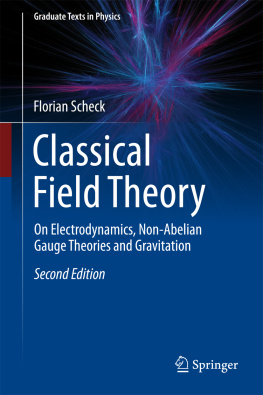1. THE tendency of modern science is undoubtedly to look to the existence of physical conditions or processes in those natural phenomena to which the theory of "action at a distance" has been applied. The gravitation theory of Le Sage has therefore of late naturally received a considerable share of attention. Le Sage finds it necessary, as a basis to his theory, to lay down certain conditions, some of which cannot but be regarded as arbitrary. Thus (as given in the paper by Sir William Thomson, ' Philosophical Magazine,' May 1873) Le Sage assumes among other conditions:
1) That the direction of the streams of particles producing gravity is such that an equal number of particles are moving in all directions.
2) That the streams are all equally dense; or the total assemblage of matter forming the streams is of the same density in all parts.
3) That the mean velocity of the streams is everywhere the same.
2. These conditions cannot but be considered arbitrary. My object is to call attention to the fact (which, if it has been observed, would certainly appear to be deserving of more attention than it has received) that all these conditions which Le Sage, with the limited knowledge of his day, assumed to be arbitrary, are in reality inevitable deductions following [207] from the dynamical principles connected with the kinetic theory of gases, or that Le Sage unconsciously enunciated the inevitable principles of the kinetic theorythat, in short, all the conditions laid down in Le Sage's theory are perfectly satisfied by a gas whose particles are very minute, and consequently the mean length of path of whose particles is very great. In other words, it may be stated as a general proposition, that when two bodies are immersed in a gas at a less distance apart than the mean length of path of the particles of the gas, the two bodies will tend to be urged together. Thus all the arbitrary conditions of Le Sage's theory (and all the facts of gravity) would follow as inevitable deductions from the simple fundamental admission of the existence of matter in space, whose normal state is a state of motion.
3. The part of Le Sage's theory which most calls for explanation, and which he makes no attempt to explain, is (even if we allow as a purely arbitrary fact that the motion of his particles took place at one time uniformly or equally towards all directions) how this uniformity of motion of the particles could be kept up under the continual changes of direction resulting from the collisions of the particles against themselves and mundane matter. Now it has been proved mathematically by Professor Maxwell, in connexion with the kinetic theory of gases, that a self-acting adjustment goes on among a system of bodies or particles in free collision, such that the particles are caused to move equally towards all directions, this being the condition requisite to produce equilibrium of pressure. The method of calculating the rate of the above self-acting adjustment for any case is given in the Philosophical Transactions for 1866. This adjustment is of such a rigid character that, if by any artificial means the motions of the particles were interfered with and made to take place irregularly (i.e. unequally in different directions), the particles when left to themselves would in a very short time automatically return back to the above regular form of motion, i.e. so that an equal number of particles are moving in any two opposite directions. Thus it follows that when a system of particles are left in space with nothing to guide them, they will, by the rigid principles of dynamics adjust their motions in such a way as to be competent to produce the effects of gravity. In other words, the movement of streams of particles with perfect uniformity at all angles (which Le Sage assumed as a mere arbitrary postulate) is found to be the necessary consequence of dynamical principles; or the particles themselves adjust their motions so as to move in uniform streams in all directions ; and, further, when any disturbance of the uniformity [208] of the motion of the particles takes place due to their collisions with mundane matter, the particles themselves readjust the uniformity of motion.
4. Le Sage imagined that the collisions of the particles disturbed permanently the uniformity of their motions, and therefore supposed these collisions to take place only at intervals of time very remote from each other. Thus he assumes " that not more than one out of every hundred of the particles meets another during several thousands of years ; so that the uniformity of their motions is scarcely ever disturbed sensibly." We now know that, so far from the collisions of the particles among themselves disturbing the uniformity of their motions, this is the very cause which corrects and maintains the uniformity of motion, or preserves the uniformity of motion in opposition to external disturbing causes. The assumption, therefore, of the above enormous interval of time between the collisions of the particles, though admissible, is by no means necessary. The only necessary condition is that the path of the particle should be a certain length, not that a certain time should be occupied in traversing it. The time taken by the particle in traversing its path depends on its velocity; and this time might therefore be small, provided, under the conditions of the case, the velocity of the particle were high. Le Sage imagined that the collisions were detrimental, not only in destroying the uniformity of the motion of the particles, but also in destroying vis viva ; and he therefore supposed the collisions to take place as seldom as possible. This belief in the destruction of vis viva at collision was universal at the time of Le Sage ; and he therefore assumed that the gravific particles would finally come to rest, and gravity cease to exist. We now know that this is an error, and that motion is as naturally maintained among a system of particles as rest. Thus the one thing requiring to be admitted to account for all the effects of gravity is, that the universe is immersed in a gas the mean length of path of whose particles is great.
5. The other assumptions or postulates of Le Sage in connexion with his theory, viz. equal density in all parts of the streams of moving particles, equal mean velocity in all parts, follow no less as automatic consequences from the recent dynamical investigations connected with the kinetic theory of gases. Thus the conditions of Le Sage's theory become converted from a series of arbitrary assumptions or postulates, to a series of deductions following from the rigid principles of dynamics.
6. It forms a truly wonderful fact to consider, that a system of bodies or particles left to themselves, with nothing to guide them but their own collisions (which might well be regarded as fulfilling all the essentials of a chaos), produces and maintains the most rigid system of order, such that the number of particles contained in unit volume of the system (taken anywhere) is equal, the mean velocity equal in all parts, the mean distance of the particles the same in all parts, and the particles are moving uniformly towards all directions in all parts. 8uch is the result produced by pure dynamics. In fact it may be said that leaving the bodies to themselves constitutes the most perfect system of control, for any interference whatever would disturb the regularity of the motions. This regularity of movement is not only naturally continued, but forcibly and automatically maintained against any disturbancesuch that if it were imagined that a system of bodies were purposely put in motion in the most chaotic manner possible, the motion would of itself in a short time become regular, or the whole would become a system of order and uniformity.











![Eisner Tanja - Operator Theoretic Aspects of Ergodic Theory [recurso electrónico] $c](/uploads/posts/book/173124/thumbs/eisner-tanja-operator-theoretic-aspects-of.jpg)

